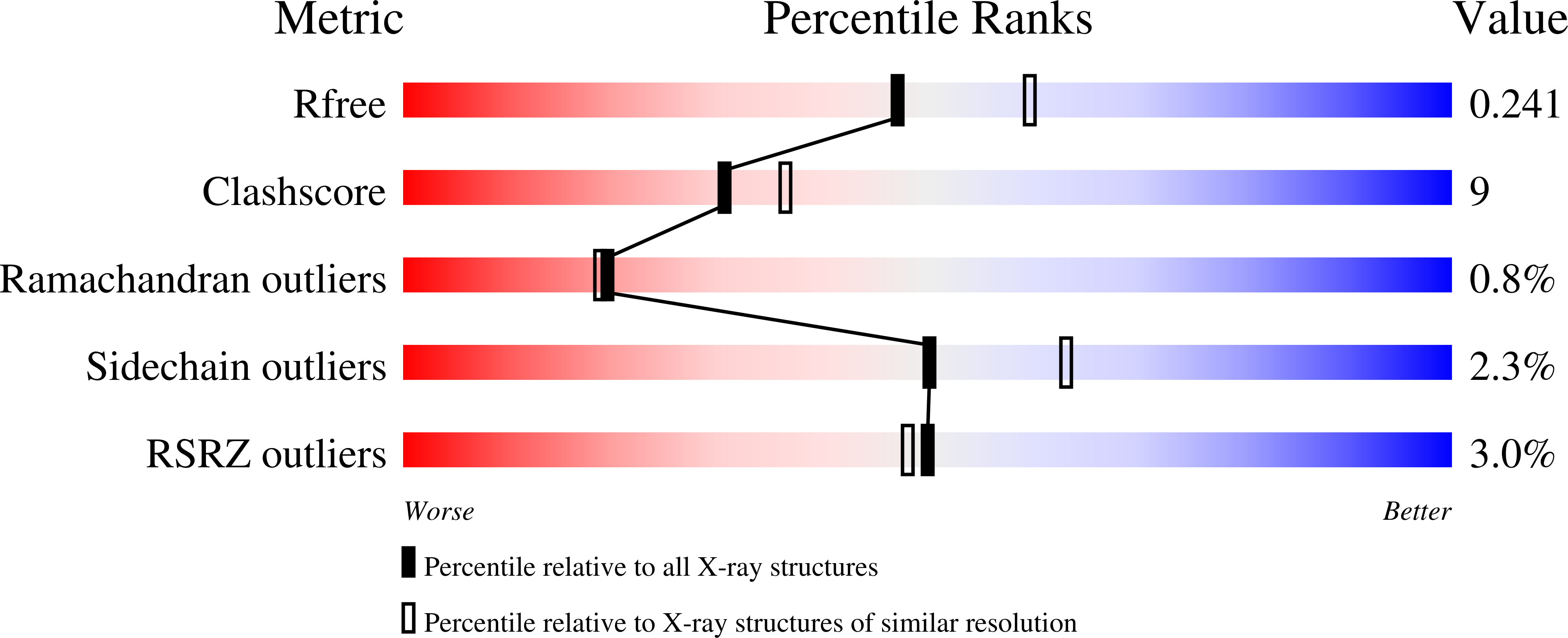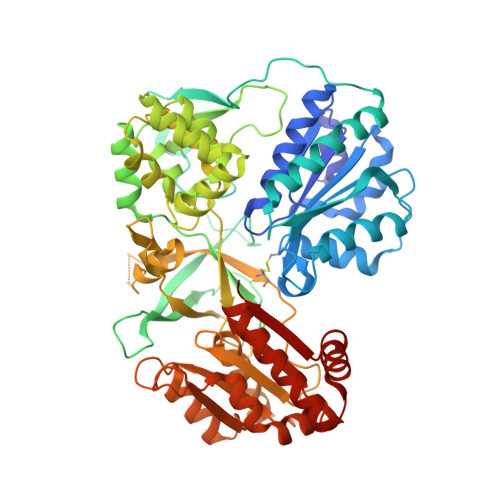Conformational Changes of NADPH-Cytochrome P450 Oxidoreductase Are Essential for Catalysis and Cofactor Binding.
Xia, C., Hamdane, D., Shen, A.L., Choi, V., Kasper, C.B., Pearl, N.M., Zhang, H., Im, S.C., Waskell, L., Kim, J.J.(2011) J Biological Chem 286: 16246-16260
- PubMed: 21345800
- DOI: https://doi.org/10.1074/jbc.M111.230532
- Primary Citation of Related Structures:
3OJW, 3OJX - PubMed Abstract:
The crystal structure of NADPH-cytochrome P450 reductase (CYPOR) implies that a large domain movement is essential for electron transfer from NADPH via FAD and FMN to its redox partners. To test this hypothesis, a disulfide bond was engineered between residues Asp(147) and Arg(514) in the FMN and FAD domains, respectively. The cross-linked form of this mutant protein, designated 147CC514, exhibited a significant decrease in the rate of interflavin electron transfer and large (¡Ư90%) decreases in rates of electron transfer to its redox partners, cytochrome c and cytochrome P450 2B4. Reduction of the disulfide bond restored the ability of the mutant to reduce its redox partners, demonstrating that a conformational change is essential for CYPOR function. The crystal structures of the mutant without and with NADP(+) revealed that the two flavin domains are joined by a disulfide linkage and that the relative orientations of the two flavin rings are twisted ¡«20¡ă compared with the wild type, decreasing the surface contact area between the two flavin rings. Comparison of the structures without and with NADP(+) shows movement of the Gly(631)-Asn(635) loop. In the NADP(+)-free structure, the loop adopts a conformation that sterically hinders NADP(H) binding. The structure with NADP(+) shows movement of the Gly(631)-Asn(635) loop to a position that permits NADP(H) binding. Furthermore, comparison of these mutant and wild type structures strongly suggests that the Gly(631)-Asn(635) loop movement controls NADPH binding and NADP(+) release; this loop movement in turn facilitates the flavin domain movement, allowing electron transfer from FMN to the CYPOR redox partners.
Organizational Affiliation:
Department of Biochemistry, Medical College of Wisconsin, Milwaukee, Wisconsin 53226, USA.


















